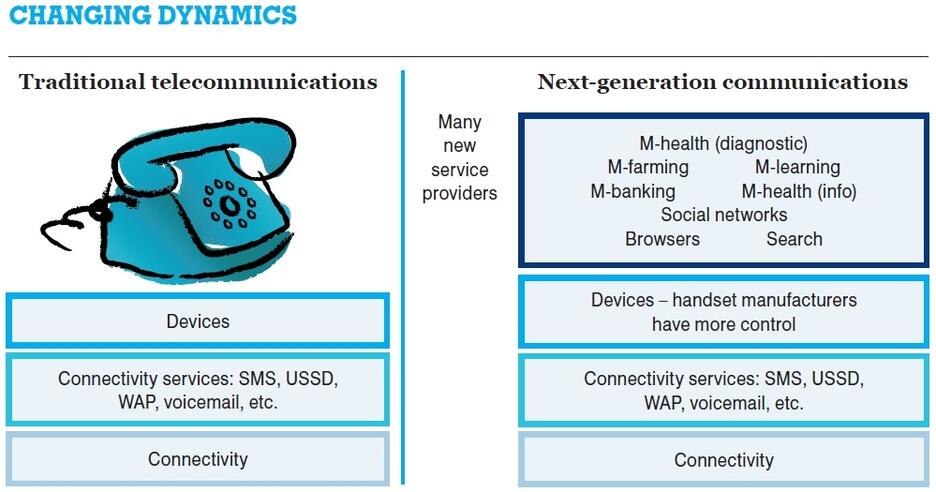The changing dynamics of telecommunications
The statistics suggest a 10% increase in broadband access can boost GDP by up to 1.5% in either developing or developed countries. Statistics aside, the power of communication can help people and countries reach their goals.
South Africa’s telecoms market was deregulated on 1 February 2005 with the legalization of voice over Internet protocol (VoIP). This was meant to be a step in opening the market to greater competition, but despite expectations of lower rates for calls, the market did not become dramatically more competitive. New licences were issued, but there was no market shake-up. The steps that were crucial to creating a competitive climate were not made for several years.
The factors that undermine liberalization are: interconnection, tariff regulation, access to scare resources, and anti-competitive practices.
• Interconnection: Making interconnection agreements between operators can be a protracted process. Regulators should advocate international best practice agreements.
• Tariff regulation: Regulation of the interconnect rate, the wholesale rate charged between operators to terminate calls on each other’s networks, is important in creating a level playing field. If this is not done, one outcome is an anti-competitive situation in which the wholesale interconnect rate is higher than the retail rate incumbent operators provide to customers.
• Access to scarce resources: Access to physical infrastructure or spectrum defines the autonomy of a new operator. The last-mile network and infrastructure or wireless spectrum rights that enable an operator to reach customers are critical resources.
• Anti-competitive practices: A legal system to litigate against anti-competitive practices is key to market liberalization.
These issues must be addressed early; otherwise the deregulation process lacks sufficient depth to make an impact. Whatever the progress of market liberalization, other competitive factors emerge.
The diagram below illustrates the changing dynamics faced by telecoms operators. In the traditional telecoms world, operators control most of the value chain and influence services. The next generation of telecoms business is being built around entertainment, information and services for essential needs. Operators are being pushed down the value chain and it is only a matter of time before online social platforms, such as Facebook, include voice and video call services to keep customers on their sites longer.
Curtailing the change in market dynamics is difficult and existing operators continue to focus on protecting voice revenues. To participate in the creation of new services, operators need to transform themselves into technology companies and add new value or, alternatively, they can decide to be data pipes. Companies that understand how to influence technology, such as Facebook, Twitter, Google with Android, and Amazon with Kindle, are producing new services. As telecoms operators often resent becoming a data pipe, but recognize that becoming a technology company means working beyond core areas of competence, they will likely create partnership models with smaller innovative companies that have services that can be tightly integrated into their networks.
In developing markets, there is a deficit of critical services such as financial services, health, education and information. Mobile phones are the best way to deliver or improve these services. This is a big opportunity for operators in emerging markets as they are ideally positioned to provide critical services. They can fill service provision gaps in emerging economies and they can do so with business models that increase their competitiveness.
















